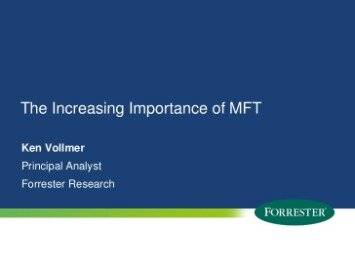Content

After exhausting administrative remedies, a business may request judicial review in federal district court of the Small Business Administration’s final decision. In the case of a general partner, the maximum is further limited to the amount of their 2019 net earnings from self-employment, less claimed section 179 depreciation deduction, unreimbursed partnership expenses, and depletion from oil and gas properties, and then multiplied by 92.35%. FTE for someone who worked fewer than 40 hours per week is equal to the number of hours worked per week divided by 40.
- The Act increases the maturity date for PPP loans to a minimum of five years, while retaining the maximum maturity date of 10 years.
- A direct consolidation loan is a type of direct loan that combines two or more federal education loans into a single loan.
- After much discussion and debate, Congress just passed the Paycheck Protection Program Flexibility Act, which will implement substantial changes to the Paycheck Protection Program .
- If the borrower does not apply for forgiveness, the loan is deferred until 10 months after the last day of the covered period, which is the earlier of December 31, 2020 or 24 weeks from the origination of the PPP loan.
- Two entities are also affiliates of each other if one controls — or has the power to control — the other.
The purpose of the Paycheck Protection Program and loan forgiveness is to provide economic relief to small businesses and certain other entities that have been adversely impacted by the COVID-19 pandemic. In addition, the PPP Flexibility Act modified the CARES Act by increasing the maturity date for loans made after the effective date from two years to a minimum maturity of five years from the date on which the borrower applies for loan forgiveness. A borrower that has already received a PPP loan may elect for its covered period to remain eight weeks as originally provided by the CARES Act. Finally, note that prior SBA guidance provides that termination of employment for reasons other than COVID-19, such as poor performance or retirement, also will not affect PPP loan forgiveness if properly documented.
What is the current status of the Paycheck Protection Program?
NLR does not answer legal questions nor will we refer you to an attorney or other professional if you request such inSummary Of Paycheck Protection Program Flexibility Actation from us. The Act extends the safe harbor date for rehiring employees from June 30, 2020, to December 31, 2020. For new PPP loans originating on or after June 5, 2020, the PPP Flexibility Act extends the minimum maturity for outstanding balances to 5 years.
- The Act reduces that requirement and instead states that only 60% of loan proceeds must be used on payroll costs for loan forgiveness.
- President Trump signed the bill into law on April 24, 2020, which allowed the Small Business Administration to accept applications again on April 27.
- The PPPFA extended the covered period to 24 weeks from the origination date of the loan, or December 31, 2020, whichever is earlier.
- If a borrower fails to apply for forgiveness before the end of the 10-month loan forgiveness application deadline, the borrower will be required to make payments of principal, interest, and fees on the full amount of the PPP loan.
- Billion in funding for PPP loans, and it allowed certain entities to apply for a second draw of a PPP loan.
- In the case of a sole proprietor, independent contractor, or self-employed person, payroll costs include net profits from self-employment, based on the 2019 Form 1040 Schedule C line 31, and limited to $100,000 annualized.
The Act and subsequent guidance have provided much needed flexibility on key issues for businesses seeking to use PPP loan proceeds efficiently and effectively during the COVID-19 crisis. Below is a summary of the changes brought about by Act and subsequent guidance, and what they mean for businesses that are currently in the process of spending their PPP loans. Please see our COVID -19 resource page with our other discussions on the PPP loan for a full analysis of the topic. The U.S. House and Senate recently passed the Paycheck Protection Program Flexibility Act of 2020 , which has been signed into law by the President. As its name implies, the Flexibility Act modifies some of the central provisions related to Paycheck Protection Program loans under the CARES Act, providing more flexibility for borrowers.
Labor, employment & human resources
The Act also includes a new exemption based on employee availability. The program provided that the federal government would forgive the loans in an amount equal to the total money spent on payroll and other specified costs during an eight-week period after the disbursement of the loan. The amount of loan forgiveness would be reduced proportionally based on calculations involving reductions in full-time employees and wages in excess of 25% for certain employees. The PPP also provided that any reduction in the amount of loan forgiveness would be avoided entirely if the employer rehired all employees laid off between February 15, 2020 and April 26, 2020, or increased their previously reduced wages, no later than June 30, 2020. The Paycheck Protection Program was established by the Coronavirus Aid, Relief, and Economic Security Act, which was signed into law on March 27, 2020. The PPP created a new loan program through the Small Business Administration to enable businesses and nonprofit organizations with 500 or fewer employees to obtain federally guaranteed loans to be used for payroll, rent, utilities and other specified costs.

A business must file a petition to appeal with the Office of Hearings and Appeals by 30 days after a borrower’s receipt of the Small Business Administration’s final PPP loan review decision or 30 days after the lender notifies the business of the Small Business Administration’s final PPP loan decision, whichever is earlier. A business will be able to seek reconsideration and appeal of the Small Business Administration’s decisions. In an exception to the above, the business will not be required to reduce its PPP loan forgiveness due to a wage reductions or a decrease in FTEs in the following cases. Take the business’s average number of full-time equivalent employees per month during the 24 weeks after the loan proceeds were disbursed, and divide it by the average number of FTEs per month between February 15, 2019, and December 31, 2019. The amount of the PPP loan is based on the applicant’s payroll costs.
New Legislation Extends Previous Application Deadline
Under the original language of the CARES Act and resulting guidance from the SBA, the amount of a PPP loan eligible for forgiveness would be reduced in proportion to the borrower’s reduction in full-time equivalent employees, unless such levels are rehired by June 30, 2020. On June 5, President Trump signed into law thePaycheck Protection Program Flexibility Act of 2020that amends the CARES Act and eases rules on how and when small businesses can use loans and still be eligible for forgiveness. The period for deferment of loan payments has been extended to when the amount of forgiveness is determined and remitted to the lender. This is a change from the previous law, which mandated deferments of not less than six months and not more than one year. The safe harbor deadline to eliminate reductions in headcount and salary or wages of employees has been extended from June 30, 2020 to December 31, 2020. Borrowers now have until December 31, 2020 to restore their workforce levels and wages to the pre-pandemic levels required for full forgiveness.
Daily Financial Regulation Update — Saturday, February 11, 2023 … – JD Supra
Daily Financial Regulation Update — Saturday, February 11, 2023 ….
Posted: Mon, 13 Feb 2023 08:00:00 GMT [source]
